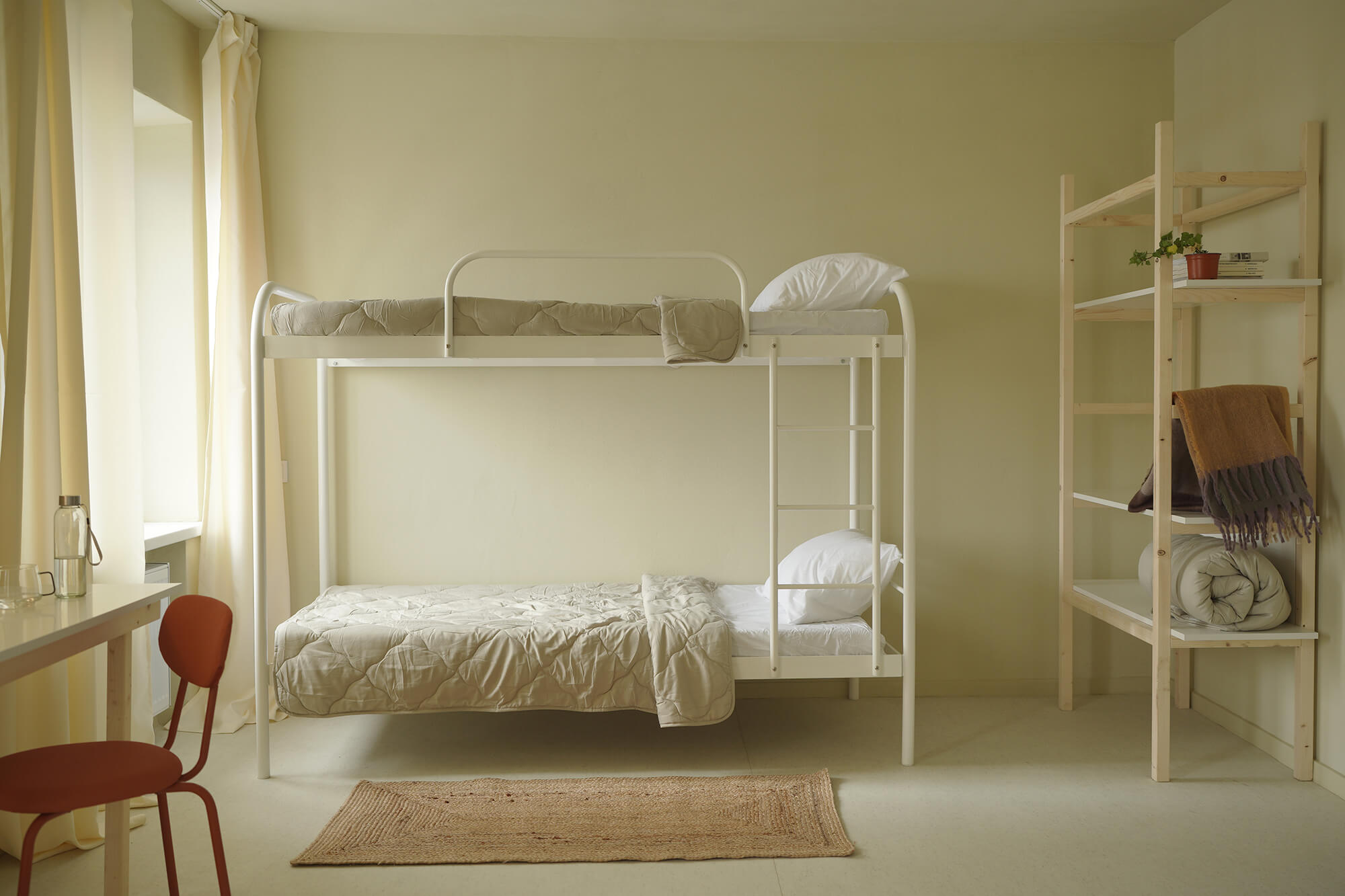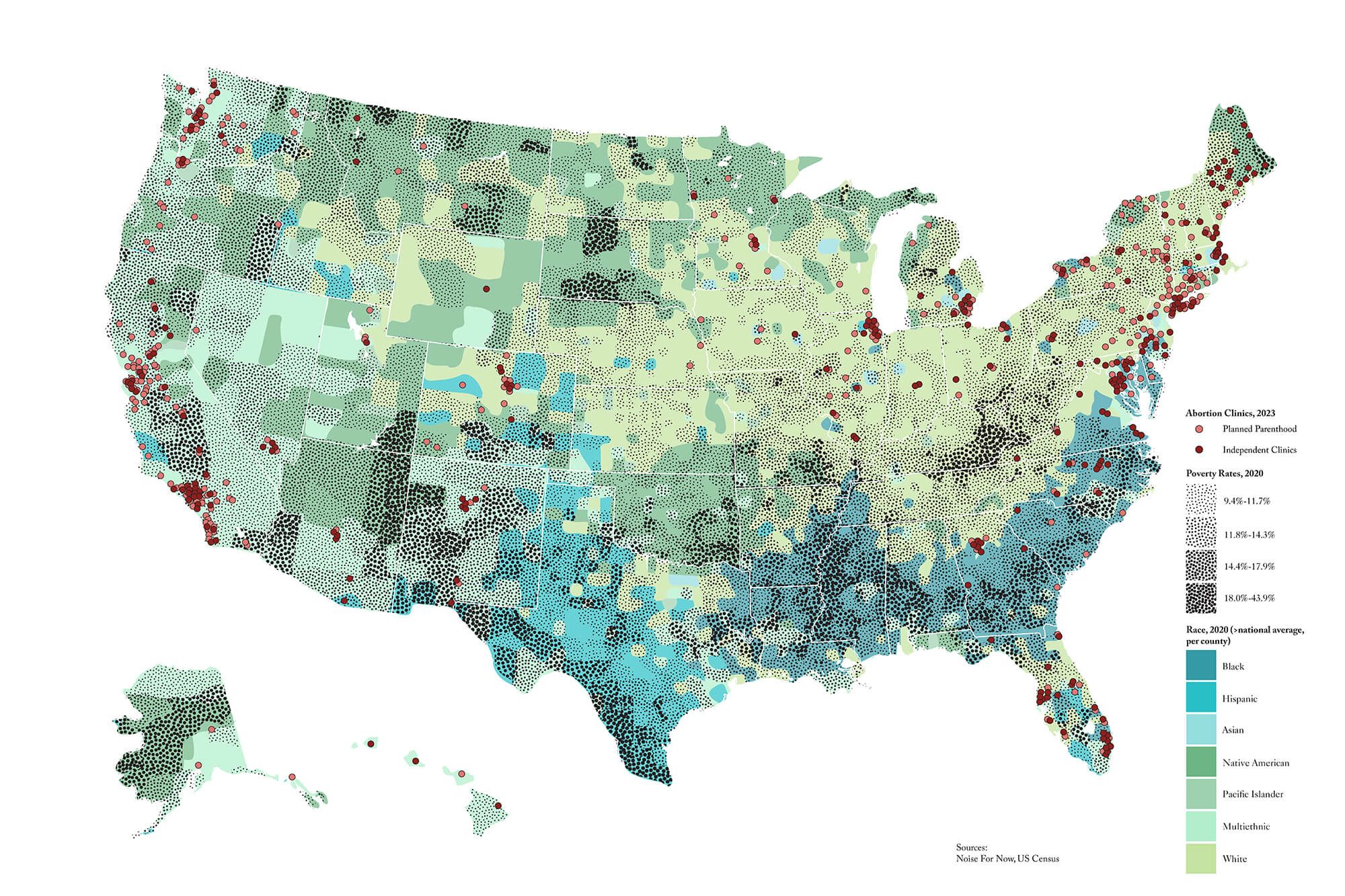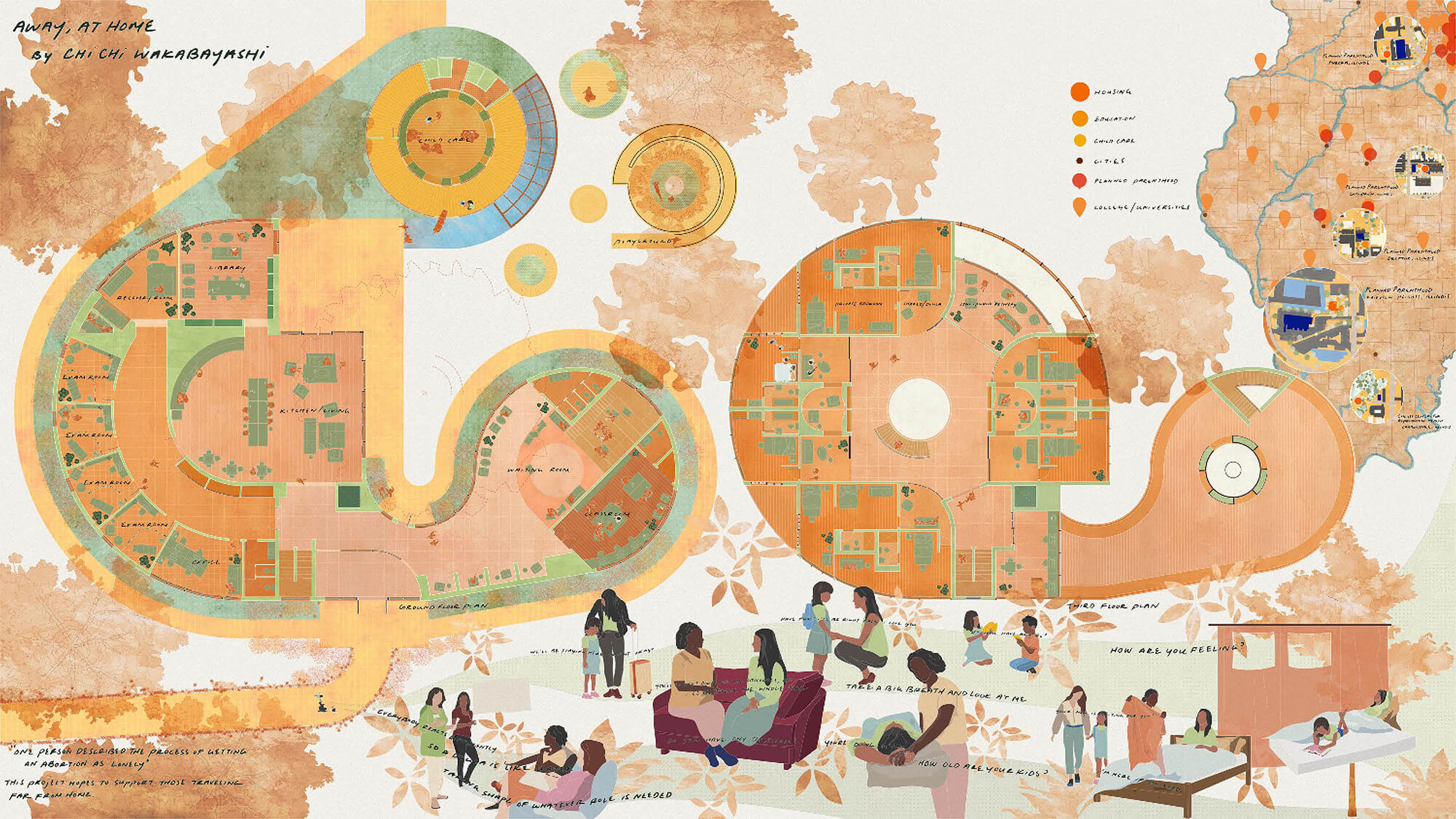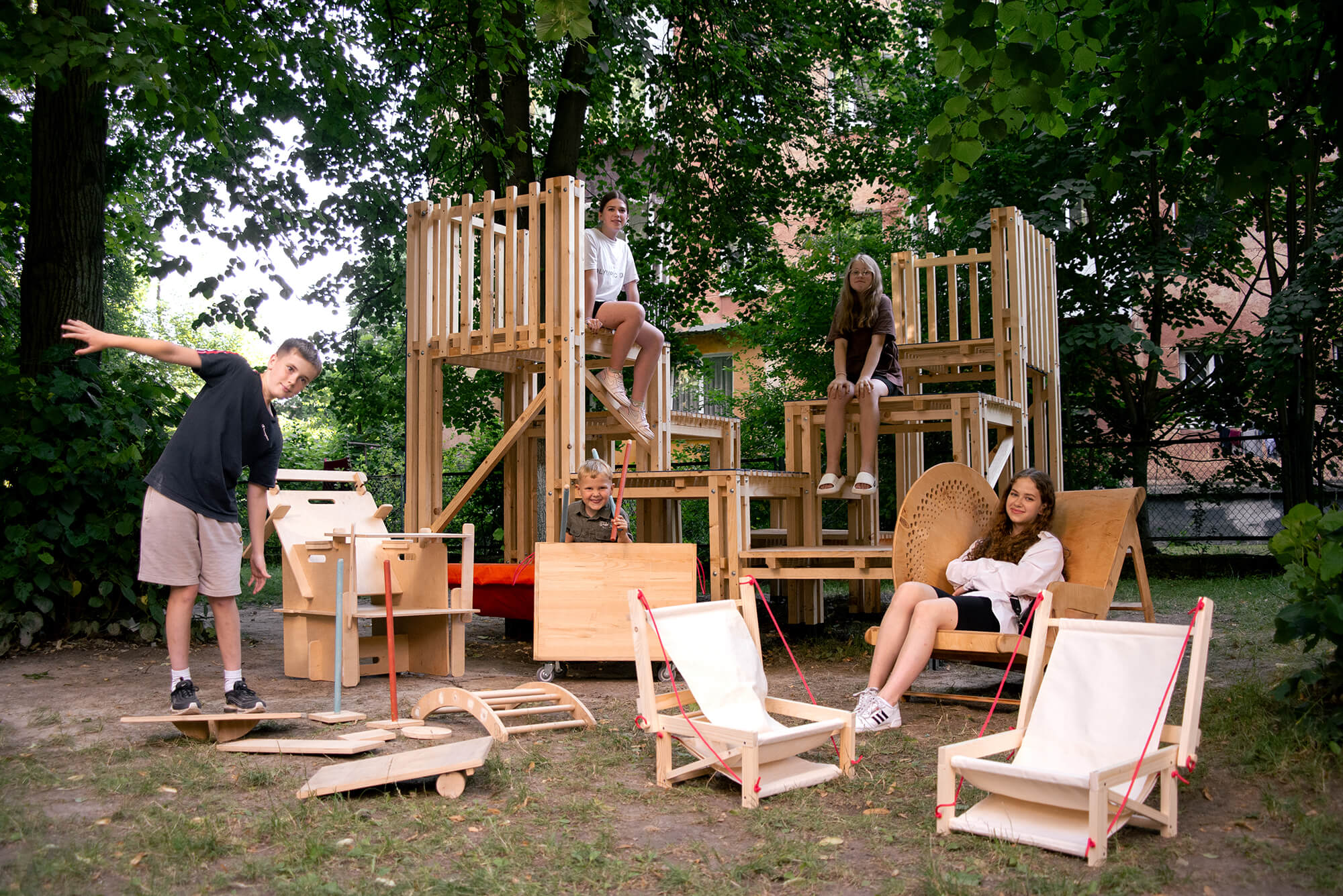As we inch closer to one of the most fraught elections in U.S. history, the Center for Architecture will host two exhibitions this spring about subjects hovering ominously over our political climate: war in Europe and the future of abortion access.
On May 2, a new exhibition entitled Constructing Hope: Ukraine will open, curated by Sasha Topolnytska, Betty Roytburd, and Ashley Bigham, with exhibition design by Aliona Solomadina. That same evening, another show, Spatializing Reproductive Justice—curated by Lori A. Brown, Lindsay Harkema, Bryony Roberts, and FLUFFFF Studio—will also debut.
Constructing Hope explores how Ukrainian architects have responded to Russia’s full-scale invasion. It platforms multidisciplinary creatives that have employed architectural strategies in Ukraine to regain autonomy over their built environments. Meanwhile, Spatializing Reproductive Justice situates itself after Roe v. Wade was repealed in 2022, exploring the architecture of Planned Parenthood, and inequities in the U.S. healthcare system.
Constructing Hope: Ukraine curated by Topolnytska, Roytburd, and Bigham will feature drawings, photographs, videos, furniture, and models located in Center for Architecture’s double-height space. A suspended full-scale prototype of a bed designed by MetaLab, a Ukrainian NGO, will be on view; as well as strategies for temporary emergency accommodation deployed in western Ukraine by Co-Haty, another design collaborative. On the ground floor, models by the artist collective Prykarpattian Theater, accompanied by photography and verbal testimonies from refugees, will be on display.
“Healing from devastation requires justice, inclusivity, and environmental restoration,” Betty Roytburd said. “Constructing Hope: Ukraine showcases collaborative efforts, horizontal organization, and knowledge exchange, revealing architecture’s vital role in reconstruction and the fostering of communal resilience. The exhibition stands as a testament to the power of action and collective resolve in shaping a sustainable future for Ukraine and beyond.”

“The resilience, imagination, and inventiveness of the participants in the exhibition shows how architectural skills can serve as a tool to focus outrage and grief into effective action. And what Ukrainian people need right now is action to give them hope for the future,” said Sasha Topolnytska. “As a facilitator of discussions on complex issues and advocate of marginalized communities through the language of design, the Center for Architecture is an ideal partner for the exhibition.”
Ashley Bigham added: “As we mark the two-year anniversary of the full-scale invasion of Ukraine, it is essential to understand and learn from the ways architectural methodologies, construction practices, and design skills are used as collective resistance in Ukraine. The work of the exhibited designers has inspired us to discover new disciplinary patterns, structures, and relationships that expand our thinking on architecture agency.”

In Spatializing Reproductive Justice curators aim to spread awareness about the inequities of reproductive care in the United States and the agency of architects and designers to expand access. The exhibition at Center for Architecture contextualizes itself in the aftermath of Roe v. Wade’s overturning by the U.S. Supreme Court in June 2022. It will feature student research and work by contemporary design practices that address the spatial, legal, and social logistics of reproductive healthcare access. On view will be designs for reproductive healthcare clinics, as well as ideas for how architects can imagine new hybrids of healthcare, housing, childcare, infrastructure, and education to support the autonomy and agency of people deciding their own reproductive futures, curators said.
The exhibition will showcase Planned Parenthood facilities in Queens, New York by Stephen Yablon Architects and in Oakland, California by Fougeron Architecture. It will also feature research by Jordan Kravitz, a healthcare architect at Stantec, about laws dictating specific abortion facility regulation in 13 states.

“Spatializing Reproductive Justice illustrates how architects and architecture have a role in the collective pursuit of reproductive freedom, healthcare access, and sustainable environments in which people of all ages can thrive,” curator Lindsay Harkema said. “Highlighting the reproductive justice framework that was created by Black women three decades ago, the exhibition aims to raise awareness about the lived, spatial realities of restricted access to reproductive health and wellbeing as well as the critical importance of community-led networks of care.”
“The collaborative studios that have become the traveling exhibition illustrate how architecture can engage with and respond to pressing cultural challenges and we hope be a catalyst for public discussion,” curator Lori A. Brown offered. “The exhibition also works to normalize reproductive healthcare into mainstream design discourse and build connections across medicine, law, and policy—spaces where architects have much to contribute.”
Both exhibitions will be on view at the Center for Architecture through September 3.

